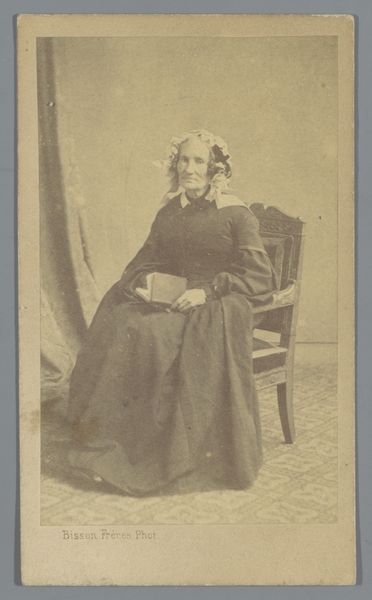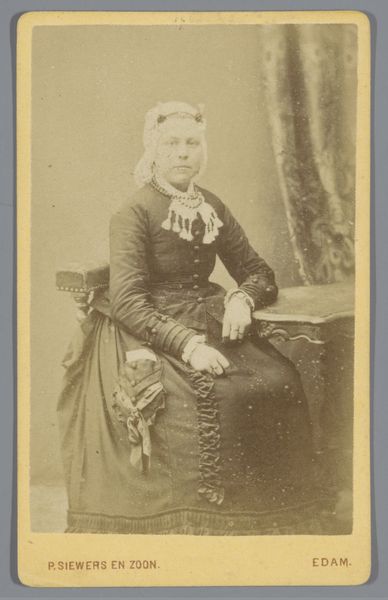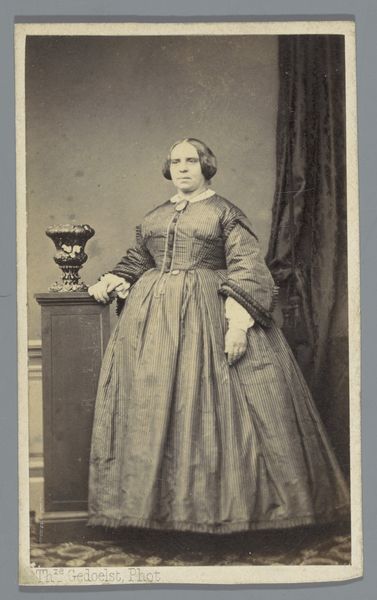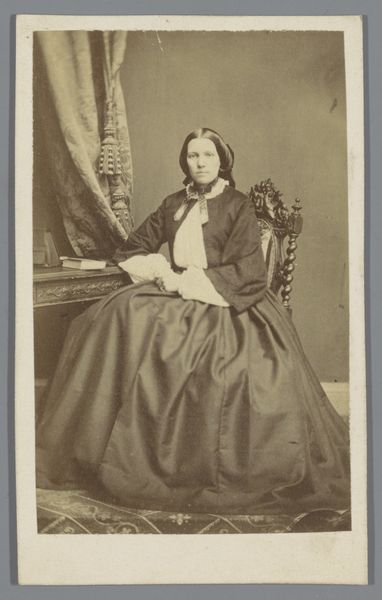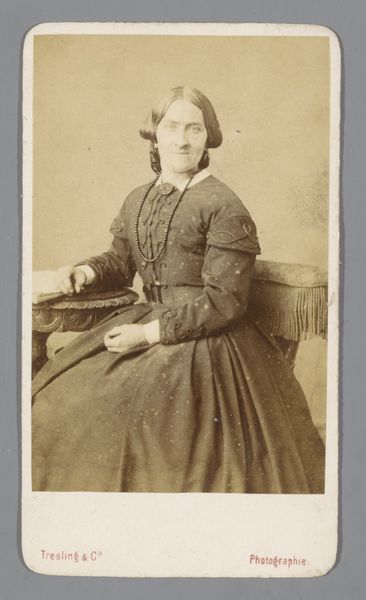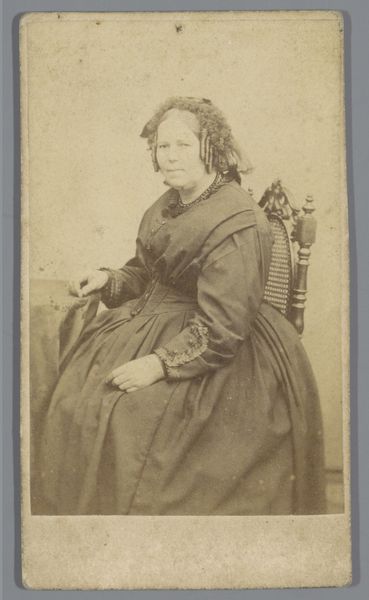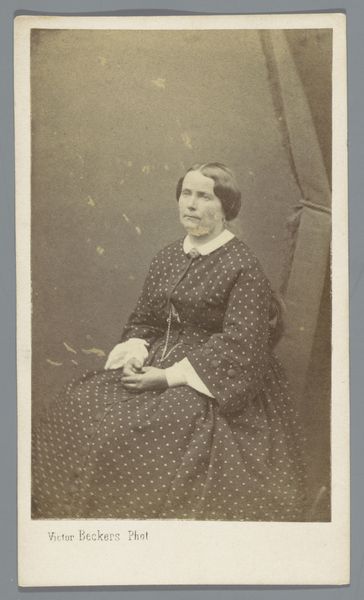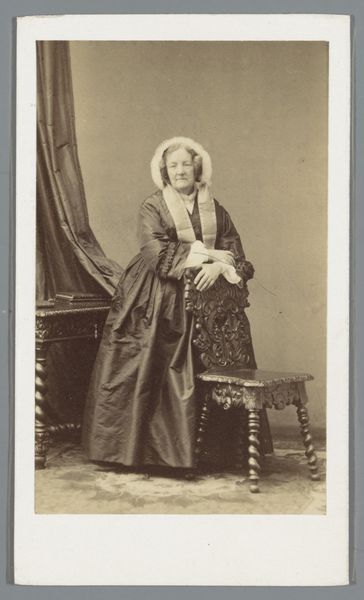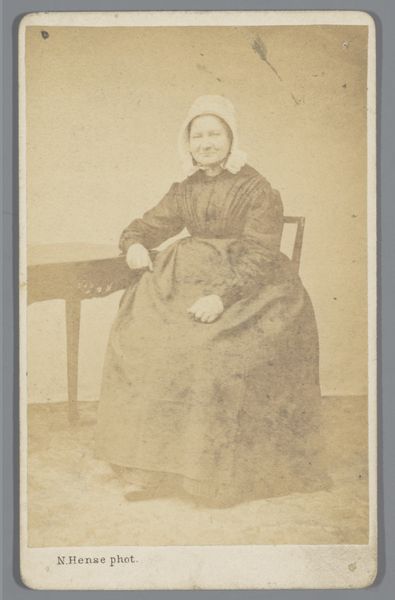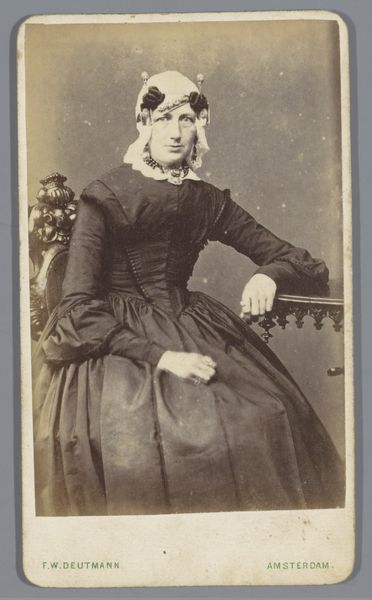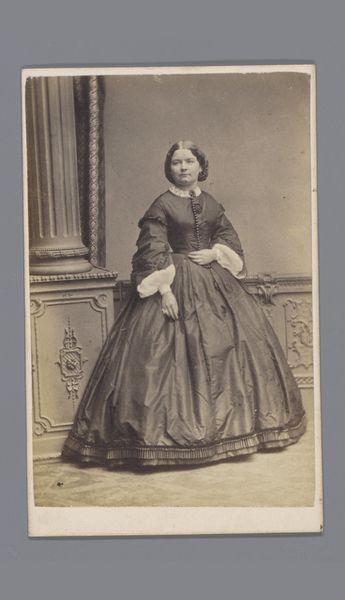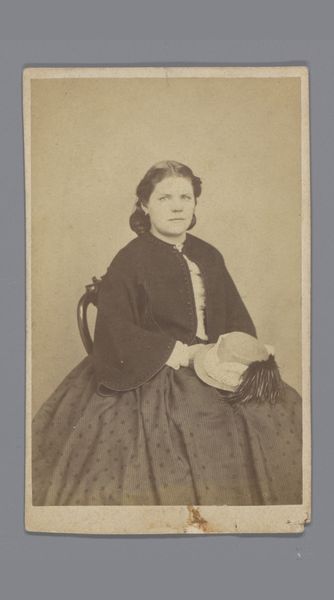![[Margaret Gillies] by John and Charles Watkins](/_next/image?url=https%3A%2F%2Fd2w8kbdekdi1gv.cloudfront.net%2FeyJidWNrZXQiOiAiYXJ0ZXJhLWltYWdlcy1idWNrZXQiLCAia2V5IjogImFydHdvcmtzLzFiMGRhMzVlLWE2MTMtNGM5Ny04MDE0LTA5NDYwNTc5N2U5Ny8xYjBkYTM1ZS1hNjEzLTRjOTctODAxNC0wOTQ2MDU3OTdlOTdfZnVsbC5qcGciLCAiZWRpdHMiOiB7InJlc2l6ZSI6IHsid2lkdGgiOiAxOTIwLCAiaGVpZ2h0IjogMTkyMCwgImZpdCI6ICJpbnNpZGUifX19&w=3840&q=75)
photography, gelatin-silver-print
#
portrait
#
photography
#
gelatin-silver-print
Dimensions: Approx. 10.2 x 6.3 cm (4 x 2 1/2 in.)
Copyright: Public Domain
Curator: The sepia tones in this photograph evoke a palpable sense of nostalgia. What feelings arise in you? Editor: A certain gravitas, definitely. There's a quiet dignity in the sitter's pose. Though I find myself thinking more about the materials themselves – gelatin silver print... it's not just an image, it's a specific congealing of chemistry, light, and labor in the 1860s. The inscription reveals that this gelatin silver print, currently housed in the Met, is entitled "[Margaret Gillies]" and made by John and Charles Watkins. Curator: Ah yes, the alchemy of photography. It reminds me how much intention goes into creating what seems like a fleeting captured moment. Do you wonder what the fabrics were made of? Her dress has that telltale sheen of wealth—the kind that tells a story about Victorian mills, trade routes, perhaps even exploitation? Editor: Precisely. These weren't ready-to-wear pieces like we see today. It speaks of an intense material culture—sourcing dyes, the weaver's skill, the dressmaker’s labor assembling it all, not to mention the labor of Watkins themselves producing this image on Parliament street! The chair and the book denote upper-class sensibilities, too. Curator: But is there a tension in those surfaces? Is she at peace or slightly constrained by the image of prosperity and authority she's projecting? What did portraiture offer sitters at that time and what demands did it ask of them? I detect something akin to yearning... perhaps that is just the trick of sepia pulling on my heart strings, or Gillies herself having to perform within very tight expectations. Editor: Definitely performance at play, and this photo feels very indicative of a specific relationship to material comforts of the day. Though the gelatin silver print enabled broader accessibility, its consumption reinforced particular social and class structures. We look at this artifact and glimpse the intricate webs of material processes—and their social impacts. Curator: Agreed. And that reflection reminds me how important it is to continually question the nature of beauty and privilege within any artwork, particularly from this era. Thanks for bringing your very grounded observations, I appreciate this encounter on a new, even more fascinating level! Editor: Indeed, thank you. It’s a valuable thing, looking at the image as both the final, presented object and as the material result of so many other labors and transactions.
Comments
No comments
Be the first to comment and join the conversation on the ultimate creative platform.
